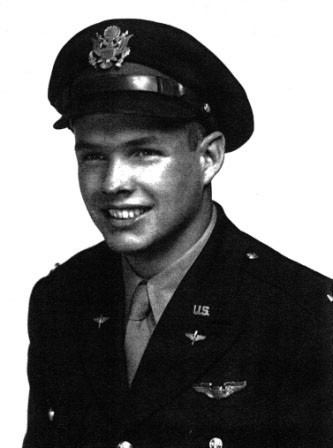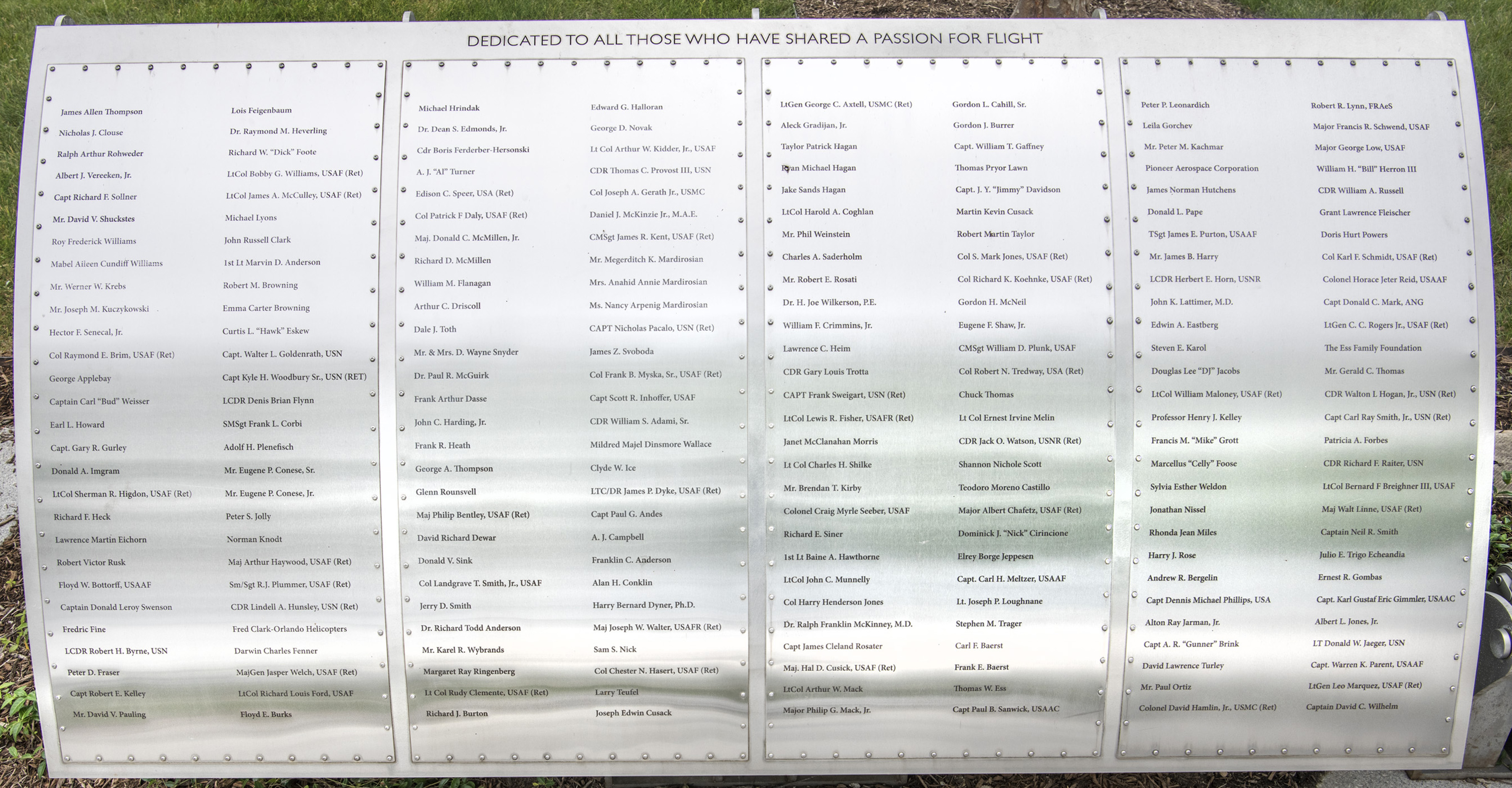
Foil: 27 Panel: 2 Column: 2 Line: 3
Wall of Honor Level: Air and Space Sponsor
Honored by:
Ms. Katherine D. Kidder
LtCol Arthur W. Kidder Jr, USAF (Ret)
" There's a feeling of freedom and exhilaration that gets in your blood," said retired U.S. Air Force LtCol Arthur W. Kidder, whose passion for flying carried him through a military career spanning three wars.
Kidder received his aviation initiation in a PT-17 Stearman biplane at the Air Corps Cadet Training School in Santa Ana, California, on Jan. 2, 1943. During his first ever airplane flight, he was enjoying the sensation of flying as a trainee, when the instructor unexpectedly cut the throttle and ordered Kidder to perform a forced landing. It was his first trial by fire, and not his last. He was assigned to Lemoore Field, Modesto, California, for basic pilot training in BT-13s. He then went on to advanced training, switching his aircraft preference from the B-17 bomber to twin-engine fighters. "Choosing the P-38 is one decision in my life that I have never regretted." The initial training planes were twin-engine Cessna AT-9 Bobcats , then RP-322s. Kidder was given a standard blindfold test to check his knowledge of the controls and then he was told to fly the craft.
" If I had time to actually think, I would have been shaking, as it was, I took off in the only twin-engine fighter in the world. It was quite a thrill!"
After graduation in Dec 1943 Kidder headed off with the 82nd Fighter Group to Foggia, Italy. On July 4th he shot down a Ju transport. "It was almost a race to see who could get there first," said Kidder of his Squadron's reaction. "I first spotted it from 35,000 feet, then screamed down toward it and scored a hit."
On July 8,1944, Kidder and fellow pilots swept toward Vienna with a goal of flushing out enemy fighter planes. Kidder downed an ME 410, an ME-109 and an unidentified twin-engine training plane.
He returned from Europe in Oct 1944 for a brief stint as a P-38 instructor in Santa Rosa, Calif. In Nov 1944 he was dispatched to Attu, Alaska in the Aleutian Island chain with the 54th Fighter Squadron, alternately hunting Japanese balloons and conducting tests on the performance limits of P-38s at extreme altitudes.
February 2, 1945 turned out to be the most fateful day of Kidder's life. At 11 a.m. he took off in his P-38 for a high-altitude test flight. After charting the operation he was told by the controller that he was 15 miles south of the base. In the thick clouds he dropped the plane from 30,000 feet to 1500 feet and broke out of the clouds with nothing but the vast Pacific Ocean in view. Unable to re-contact the controller (ice had broken the antennas) he methodically searched for land by flying in increasingly larger rectangles over the stormy seas. After four fruitless hours his gas gauge was dropping to empty. "Everything looked dismal," he recalled. "The icy Pacific water was so cold you wouldn't last three minutes." But then Kidder spotted the tiny island of Buldir. He tightened his safety harness and lowered the plane's landing gear to slow his speed. Knowing the landing gear would likely flip the craft upon touchdown, he lifted the wheels at the last instant and slid in for a violent landing, sliding 300 feet before coming to a dead stop. "The plane was smoking by then, and I expected it to catch fire." Of all the desolate and uninhabited islands, he had found the only one where American weather observers were stationed. "Now I wish I knew more about them, and what they had done."
After World War II he returned to Denver to attend university, but with the Korean War he was ordered back to active duty, where he was a ground advisor specializing in survival training. He then served as an intelligence officer in Washington, DC until the Vietnam War, when he was stationed in the Philippines as a C-130 troop carrier pilot and operations director.
In 1969 eye cataracts did what the Germans, Koreans, and the Vietnamese could not; they grounded him. He retired in 1970 and spent several years sailing around the Caribbean, and then sailing alone from Panama to Polynesia. "Flying and sailing both require a lot of precision and an ability to stay the course, and both are dependent on the effects of weather and wind."
He returned to Denver in 1977 where he lives with his wife Mary Lou. In 1994 scores of memories surfaced when Kidder was invited to join a training mission for the Air Force squadron from Hill AFB. The mission: to recover Kidder's P-38, which is now fully restored in the Hill Aerospace Museum at Hill Air Force Base in Ogden ,Utah.
Perhaps Kidder's only regret is that he could not fly forever. "If I were still a pilot I would hope to be flying F-15s. Maybe I would even be in the space program. But I really believe the P-38 was the best fighter plane ever built."
Wall of Honor profiles are provided by the honoree or the donor who added their name to the Wall of Honor. The Museum cannot validate all facts contained in the profiles.
Foil: 27
